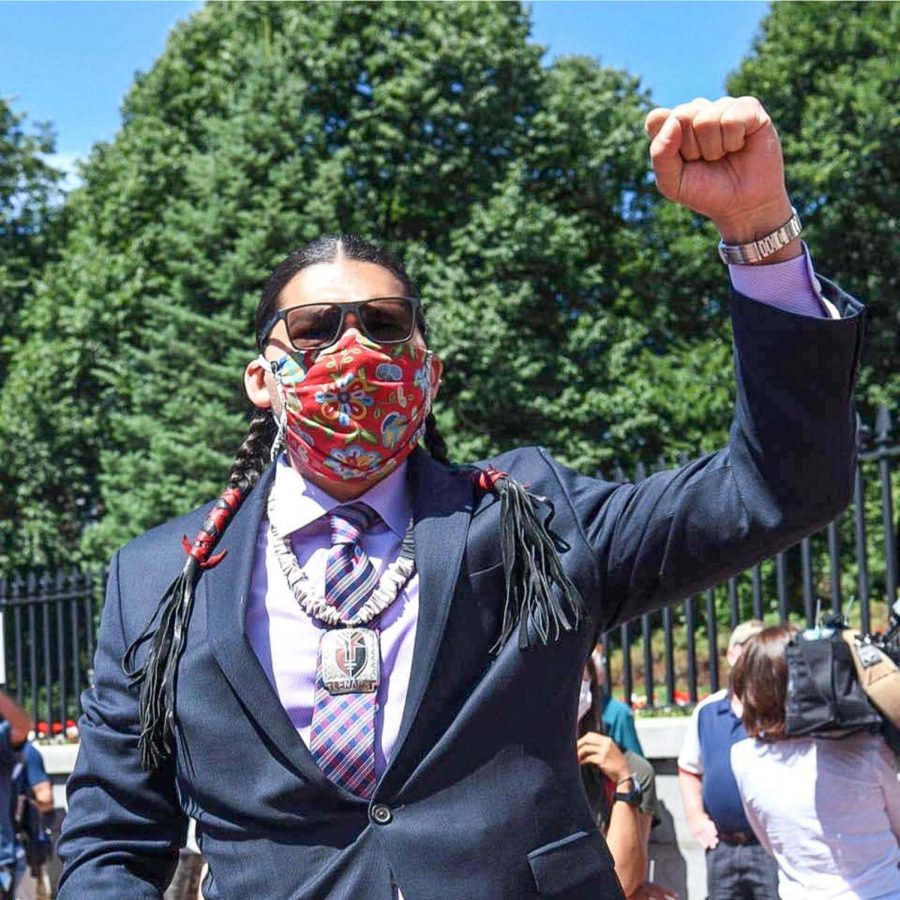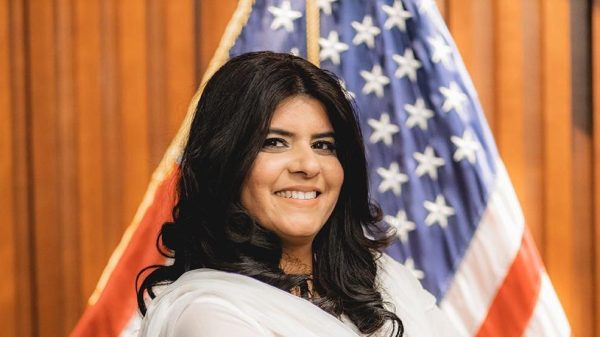Hereditary Chief of Delaware Nation discusses appropriation by corporations
To combat CPAIN, Chief Daniel “StrongWalker” Thomas will work with federally recognized Indian nations, politicians and educators to support the true Lenape people. (Photo courtesy of AccessWire)
November 12, 2021
On Tuesday evening, Hereditary Chief of the Delaware Nation Lenni Lenape People Daniel Strongwalker Thomas hosted a discussion regarding corporations posing as indigenous nations, or “CPAIN.” According to Thomas, CPAIN is a national phenomenon where corporations will claim to be a representative of Indigenous peoples while having no ties to the community.
The talk was one of three events sponsored by Lafayette’s Office of Intercultural Development to celebrate Indigenous People’s Month. In particular, the Office celebrates the Lenape Tribes of the Delaware Nation and hopes to highlight the challenges that they face.
Lenape, which means “the original people,” refers to Indigenous Americans Tribe belonging to the Delaware Nation. According to the Lenape Nation of Pennsylvania, their historical territory included present-day Delaware, New Jersey, parts of southern New York and parts of Eastern Pennsylvania—including the land on which Lafayette College is located. The Lenape people are a part of the Delaware Nation Tribe, one of three federally recognized American Indian tribes of Delaware Indians.
Thomas said that corporations claim to represent the Lenape, among other Indigenous peoples, for a few primary reasons. First, it may be a mechanism to cope with the persecution they may have faced themselves. Native Americans are not the only group to face massive persecution in the United States, and those individuals may see Indigenous nations as a way to reclaim their identity.
Second, Thomas points to the financial gains CPAIN can take advantage of, as federally recognized Indigenous Nations are eligible for grants from the United States Government. However, Thomas points to instances where these examples of “race shifting” extend beyond the phenomenon of CPAIN.
Rachel Dozier, the former President of the NAACP, for example, was exposed for lying about her racial background. According to Thomas, “race shifting is not new in America, but it is for Native Americans.”
In Canada, falsely claiming to be an Indigenous person on a legal form is a criminal offense. Thomas is frustrated at the lack of action taken by the Government to prevent CPAINs from appropriation in the US.
“Why does Canada have a law that says it is illegal to pretend you’re indigenous when you’re not? Why does Canada understand this, but here in America, the Delaware Nation is not receiving the same courtesy?” Thomas asked.
Beyond the talk of CPAINs, there was a vibrant discussion of the history of the Lenape people.
“I think I really realized how much the tribe’s history meant to them and how it’s still relevant,” Ciara O’Connor ‘22, one of the attendees, said. “I also thought it was really interesting that they have to prove their race and identity and no one else has to.”
















































































































steven crow messenger • Nov 13, 2021 at 10:42 am
I agree with Mr Thomas that there are Corporations that steal from Indigenous entities. It’s usually caucasians trying to steal our culture to make goods and palm off as indigenous made, but State recognized tribes are not part of CPAIN. Thomas is under the assumption that you have to be federally recognized to be considered “Native”. But this is not so. Many State recognized tribes go on to be federally recognized, if they have the time and funding. State laws have presidence over federal laws.. a good example is the Marijuana Laws. Many states allow it even though its still against federal laws.
What was the status of the Dealware when the government took away their federal recognition in 1997 and 2004? Were they any less Delaware? No! So why are you solely relying on their acknowledgement for your argument? Believe me.. State recognized tribes could care less about your CPAIN or anything else you have to say. One other thing. The East Coast is not your homelands. Your ancestors left more than 250 years ago. You have no clue about these lands and can’t state where you come from here. What town? What was the name of your village? Who were the people here?